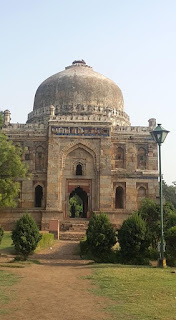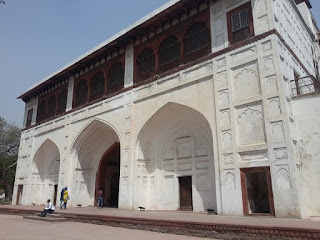Delhi Heritage Trail : 23
St. Stephens Church , Chandni Chowk
This is perhaps the second oldest church in Delhi constructed around 1862. Will be surprised to know the establishment of a Christian church in Mughul Delhi. The British started occupying Delhi in 1803
after the Battle of Delhi in September 1803 which was fought between British and Maratha confederacy led by Daulat Rao Scindia under whom the Moghul Shah Alam II was hostage. The battle was fought in the Trans yamuna area of present East Delhi in Patparganj village. The British won the battle against the Marathas who were more used to guerilla warfare. From that year the British began to stay put in Delhi with a senior general as Resident and a retinue of his servants. Churches were began to construct for their religious requirements.
St Stephens church was constructed around 1862 by the Anglican society . It is a large Romanesque Church with arcades on either side and intricately carved sandstone columns that line the facade. It is on Church Mission Road . The colour of the church is said to symbolise the blood of St . Stephen the first Christian martyr and patron saint of the city. The circular stained glass is the one of its kind in Delhi. It has ceiling of semi circular roof adding to its divinity.
The church is a heritage structure as well as an active church under the Church of North India, Delhi diocese. The St.Stephens College established in 1881 and St. Stephen Hospital established in 1885 are group of institutions under the church administration.






























